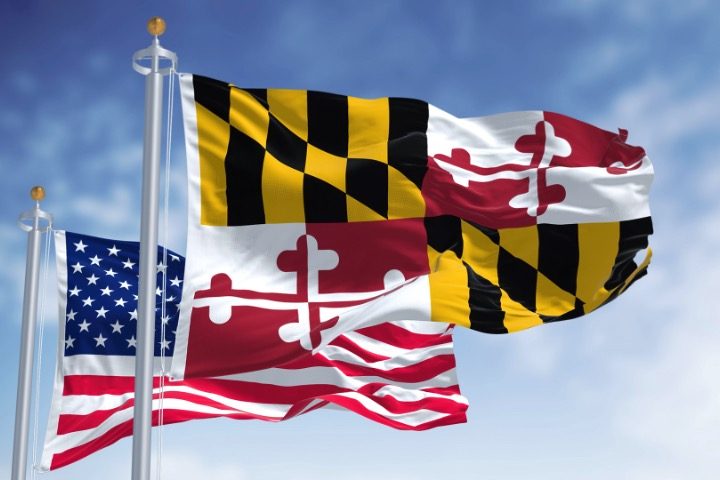
In a ruling by the U.S. 4th Circuit Court of Appeals, authored by an Obama appointee, the court overruled its three-judge panel. That panel had earlier properly applied Bruen to Maryland’s scheme restricting a citizen from purchasing a firearm until he could prove he was law-abiding and capable of handling a firearm. There was no historical reference or analogue for such an infringement, according to the panel.
On appeal to the full court, this presented a problem to the anti-gun, anti-Second Amendment majority. How could they get around the requirement in Bruen that governments must show historical evidence of similar restrictions in order to defend their infringements of the Second Amendment?
Bruen’s Footnote Nine
No problem: use Footnote Nine from Bruen.
Here is the footnote the majority used in its crafty workaround of the main holding in Bruen:
It appears that … shall-issue regimes [Maryland calls itself a “shall issue” state], which often require applicants to undergo a background check or pass a firearms safety course, are designed to ensure only that those bearing arms in the jurisdiction are, in fact, “law-abiding, responsible citizens.”
That neatly eliminated any need for the full court even to consider any such historical evidence of Maryland’s infringements, which are severe. Under the state’s Firearm Safety Act, an applicant seeking the state’s permission to purchase a firearm must
- Pass two background checks;
- Take and pass a firearm safety training course; and
- Pay a fee to obtain the state’s permission to exercise the right.
The training course “must include at least four hours of instruction” by a qualified instructor (who himself must be licensed by the state), and the applicant “must fire at least one live round” to demonstrate his or her “safe operation and handling of the firearm.”
The state then has up to 30 days to decide whether or not to grant permission to the applicant to purchase a firearm.
Violation of the statute is punishable by up to five years in jail and a $10,000 fine.
Majority Dispensed With Complaints
Once relieved of the need to apply Bruen, the full court promptly backhanded the other complaints brought by plaintiffs Maryland Shall Issue, Inc., Atlantic Guns, Inc., and two offended citizens. Plaintiffs claimed that they suffered “temporary deprivation” of their Second Amendment right to purchase a firearm, in line with the guarantee of the right to “keep” and “bear” arms.
Wrote the court:
We reject the plaintiffs’ argument that any delay resulting from compliance with the HQL [Handgun Qualification License] statute qualifies as “infringement.” … “Through the first quarter of 2018, there were no completed HQL applications pending disposition for longer than 15 days.”
As for the plaintiffs’ complaint about needing two separate background checks, the court responded that one background check was needed for “each individual” seeking to obtain permission, and another for “each firearm” sought to be purchased. Therefore, wrote the court: “We reject the plaintiffs’ argument that the HQL statute’s background check is wholly redundant and so abusive as to ‘infringe’ the Second Amendment right….”
Dissent to the Court’s Ruling
Trump appointee Judge Julius Richardson wrote an eloquent dissent. It’s worth quoting at length for the benefit of the majority on the court:
Maryland law prohibits anyone from acquiring a handgun without a “handgun qualification license.”
To obtain a license, an applicant must, among other things, submit fingerprints for a background check and take a four-hour-long “firearms safety training course,” all at the applicant’s expense.
If an applicant completes these requirements, fills out an application, and pays the required $50 fee, then the Secretary of State Police “shall issue” … a license within thirty days.
Deterred by these requirements, Plaintiffs challenged this regime as violating their Second Amendment rights.
Maryland eventually defended its law before a panel of our Court. But rather than identifying any relevant historical support for its regulation, Maryland rested its case on a footnote in a Supreme Court opinion.
The panel, unmoved by this effort to bypass controlling principles, held that Maryland’s law violates the Second Amendment.
Now, our en banc Court carries Maryland’s defense across the finish line.
Yet to do so, the majority stretches implications from Supreme Court dicta to establish a carveout from Supreme Court doctrine.
It then defends this result by grounding it in a contrived reading of the Second Amendment’s plain text, for which the majority offers no support beyond negative inference.
I cannot assent to this transparent workaround of governing doctrine….
Because Maryland’s law regulates protected conduct under the amendment’s text, and because Maryland has identified no historical basis for its law, I would hold that it violates the Second Amendment.
I thus respectfully dissent.
The Majority’s Phony “Workaround”
Richardson then expands on the faux “workaround” the majority used to avoid the pain demanded by Bruen to show historical analogues to such infringements:
The majority reads Footnote Nine to establish the presumptive constitutionality of all shall-issue licensing regimes, including Maryland’s.
But read in context, Footnote Nine’s role was much more modest. Footnote Nine merely clarified that shall-issue licensing regimes are not necessarily unconstitutional just because may-issue regimes are.
He enlists assistance from the Supreme Court in warning against such deliberate manipulation to obtain the desired result:
The Supreme Court has expressly cautioned against “read[ing] a footnote” in an opinion to “establish the general rule” for a class of cases. (United States ex rel. Schutte v. SuperValu Inc.)
Without such caution, we risk cherry-picking “stray comments and stretch[ing] them beyond their context—all to justify an outcome inconsistent with th[e] Court’s reasoning and judgments.” (Brown v. Davenport)
Richardson ends his dissent with this:
Maryland’s law operates through an entirely different mechanism. It does not identify dangerous people and then target them with restrictions and sanctions.
Rather, Maryland’s law bars everyone from acquiring handguns until they can prove that they are not dangerous. [Emphasis in original.]
By preemptively depriving all citizens of firearms to keep them out of dangerous hands, Maryland’s law utilizes a meaningfully different mechanism and thereby goes far beyond historical dangerousness regulations.
Majority Ignores Bruen
Richardson is in the distinct minority in the 4th Circuit:
It is disheartening that our Court has gone out of its way to avoid applying the framework announced in Bruen. I can only hope that in future cases we will reverse course and assess firearm regulations against history and tradition.
I thus respectfully dissent.
Related Article:
Federal Judge Reluctantly Prevents Enforcement of Maryland Gun Regs




